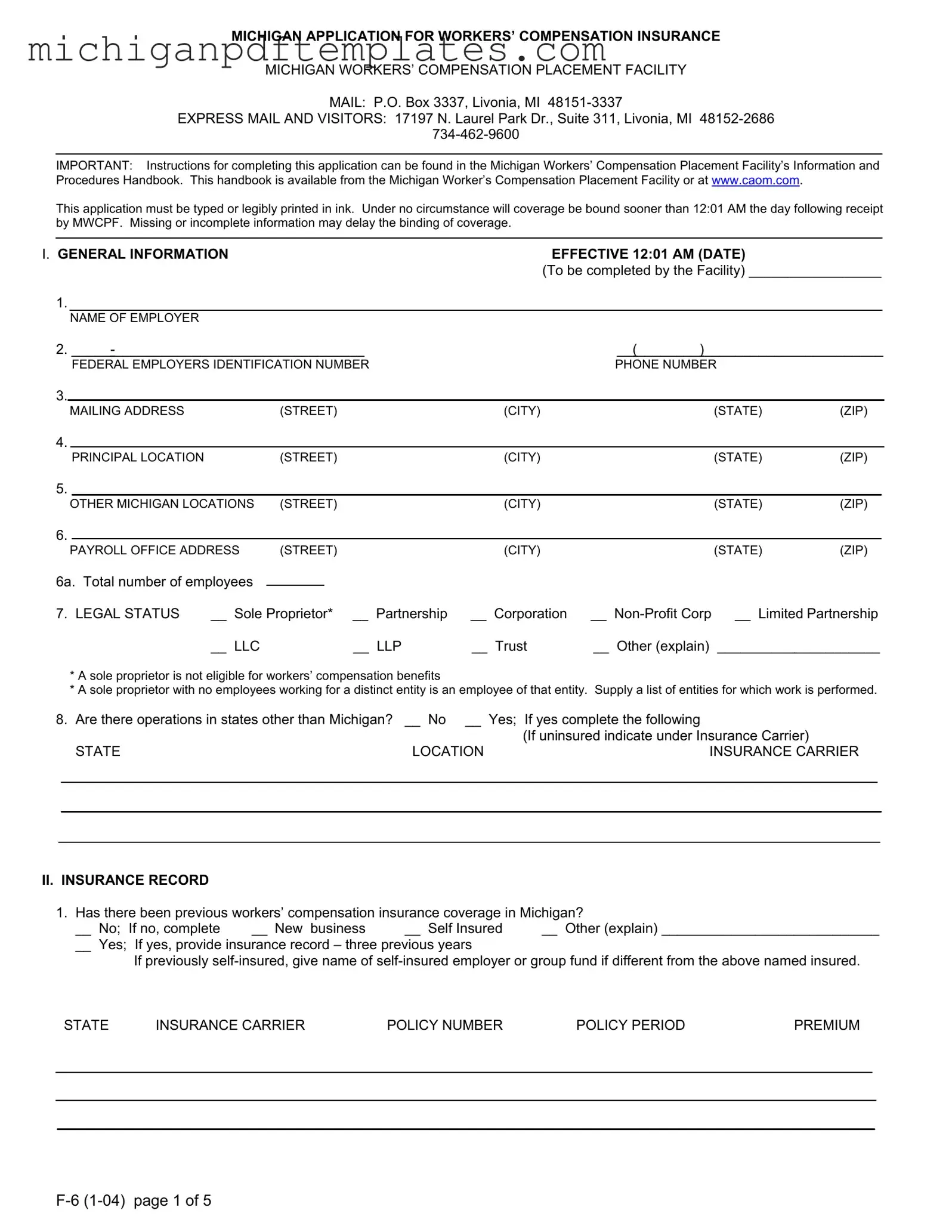The Michigan F 6 form serves as a crucial application for workers' compensation insurance, specifically designed for businesses operating within the state. This form is managed by the Michigan Workers’ Compensation Placement Facility (MWCPF) and is essential for employers who are unable to secure coverage through standard insurance channels. It requires detailed information about the business, including the employer's name, federal identification number, and various addresses related to the operation. The form also includes sections that inquire about the employer's insurance history, legal status, and the nature of the business. Additionally, it prompts employers to disclose information about their employees, including payroll details and ownership structure. Completing this form accurately is vital, as any missing or incomplete information may lead to delays in obtaining coverage. Employers must also provide a premium payment along with the application, ensuring that coverage will not be bound until the payment is received. Overall, the Michigan F 6 form is a comprehensive document that facilitates the acquisition of necessary workers' compensation insurance for businesses in Michigan, helping to protect both employers and employees in the event of workplace injuries.
